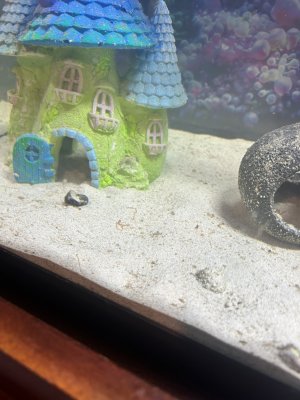A.addixtion
New member
I don't like slamming/bad mouthing a product, but API test kits are among the least reliable to use and color matching is subjective. I know you have a small aquarium. Switch to Salifert Test Kits when you can. They are subjective too, but I'd get a pH meter reader (see my post #16).
A year-old tank should not have much of a diatom population. Are you sure they are diatoms? Do you have a microscope or access to one to check this out?
Hold off on doing another 50% water change for two days. Make the water up now and check the pH of the new water before you use it to make the water change. If it is worms, you can treat the water with PraziPro
I went to a different lfs and they suggested I try PraziPro or IntestiPro. I just dosed with IntestiPro as the PraziPro says not to mix with conditioners containing sulfur and I use Prime. Has anyone used PraziPro while using Prime conditioner? Is it safe? Can I also use PraziPro even though I’ve already dosed with IntestiPro?I don't like slamming/bad mouthing a product, but API test kits are among the least reliable to use and color matching is subjective. I know you have a small aquarium. Switch to Salifert Test Kits when you can. They are subjective too, but I'd get a pH meter reader (see my post #16).
A year-old tank should not have much of a diatom population. Are you sure they are diatoms? Do you have a microscope or access to one to check this out?
Hold off on doing another 50% water change for two days. Make the water up now and check the pH of the new water before you use it to make the water change. If it is worms, you can treat the water with PraziPro.


